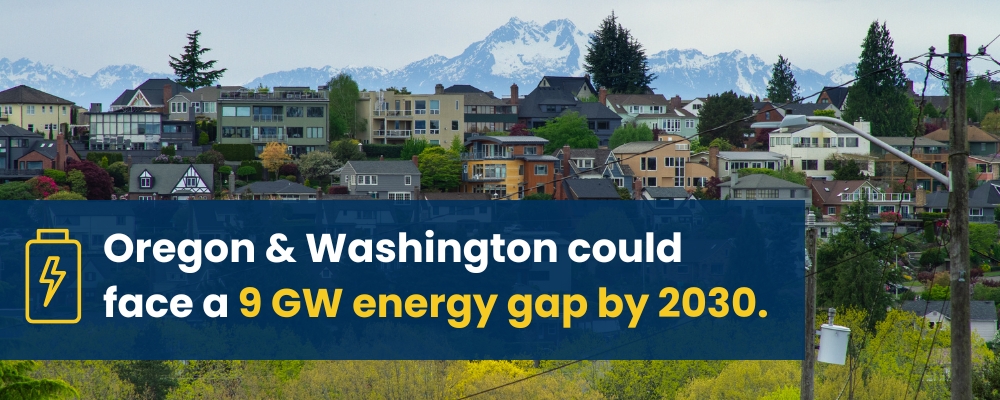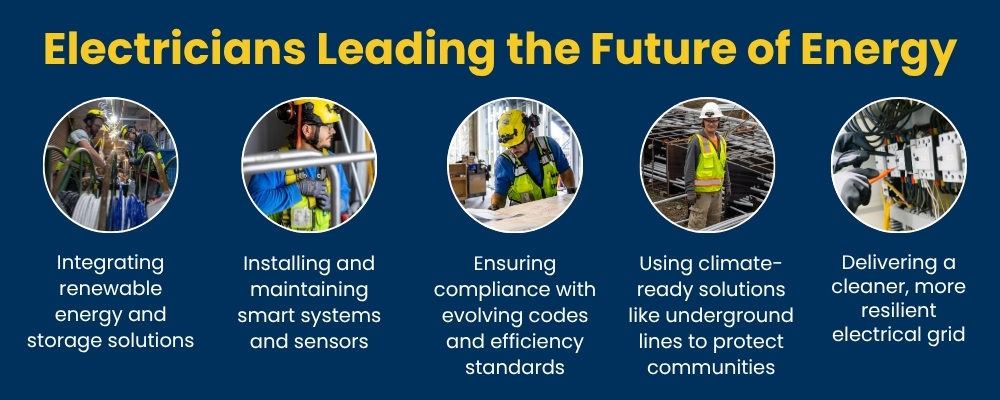The Impact of Climate Change on Electrical Work & Careers
Climate change is reshaping how we generate, deliver, and use electricity. Across the Pacific Northwest, shifting weather patterns, rising temperatures, and increasing intensity of storms are testing the limits of our power systems and infrastructure.
These challenges signal an emerging transformation in the electrical industry. New builds and retrofits will require professionals knowledgeable in supporting clean energy, grid modernization, and disaster preparedness.
How Climate Change Is Reshaping the Electrical Sector
The Pacific Northwest has been known for its focus on sustainability and hydropower innovation. Yet, climate change adds new complexity to the region’s energy equation.
- Changing precipitation patterns are disrupting hydropower generation, affecting electricity predictability.
- All-electric and solar-powered buildings, while environmentally responsible, can be more vulnerable to outages during extreme weather.
- Warmer, drier summers are increasing wildfire risks, threatening aboveground transmission lines and construction timelines.
Meeting Rising Energy Demand in the Northwest
Delayed grid upgrades coupled with increasing demands for energy are further complicating an already vulnerable system. By 2030, Oregon and Washington could face a 9-gigawatt gap between how much energy is being produced and what communities require. As a result, planned rolling blackouts during extreme weather could begin as soon as 2026.

Several powerful trends are converging to reshape electricity demand:
- The Electrification of Everything: From vehicles and home heating to industrial equipment, more systems are switching to electricity to cut carbon emissions, driving up power demand and changing infrastructure requirements.
- Rapid Data Center Expansion: The Pacific Northwest’s tech-driven economy depends on data centers that require massive, continuous power supplies and robust cooling systems.
- Smart-Building Technology: Modern commercial and residential developments are increasingly designed with advanced automation, sustainable infrastructure and renewable integration in mind.
These shifts are placing greater pressure on the region’s existing grid and requiring a new generation of projects designed around resilience, flexibility, and efficiency. For contractors and electricians, these shifts mean adapting how and what we build, ensuring new systems can withstand environmental stress while supporting reliability.
Shaping the Future of Electrical Work
As the energy landscape evolves, a variety of technologies and practices are shaping the future of electrical work. Electricians are equipped to meet the challenge. The sector’s technical know-how, problem-solving, and adaptability shape the systems of the energy future. Here’s how:
Renewables and storage are second nature.
With a strong foundation in electrical systems, electricians are naturally prepared to integrate battery storage and renewable energy, now core features of modern projects.
Smart systems are in their wheelhouse.
As buildings get smarter, the electricians’ background in wiring and controls gives them a head start. Connecting and maintaining these systems keeps energy flowing efficiently.
Codes and compliance come naturally.
Electricians already work to strict standards, so adapting to new energy-efficiency and resilience codes, such as compliance with Distributed Energy Resources (DERs), is part of the job.
Diagnostics and data are part of the toolkit.
Today’s systems rely on sensors and analytics, and electricians’ troubleshooting skills make them pros at keeping performance on track.
Innovative climate-ready solutions.
From thermal energy networks to undergrounding power lines, electricians are implementing resilience technologies to protect communities and the grid.
Electrical Innovation Driving a Cleaner Energy Future
As climate impacts intensify, the electrical industry plays a defining role in how communities adapt and transition toward sustainability. Every upgraded system, renewable installation, and microgrid project moves the region closer to a cleaner and more reliable energy future.
Across the Pacific Northwest and beyond, electrical professionals are not only keeping the power on. They’re helping reimagine how it’s generated and sustained in an era defined by change.

Join the NECA-IBEW Local 48 Community
Electricians’ roles are expanding into areas like microgrids, green infrastructure, and resilience planning. Whether you are starting out in the trade or want to stay on top of energy trends and education, a supportive community is essential.
The NECA–IBEW Local 48 partnership provides access to career-enhancing training, resources, and a network of fellow industry members.
Visit the Oregon-Columbia Chapter of NECA or IBEW Local 48 to learn more about membership and resources.
SIGN UP FOR OUR NEWSLETTER


